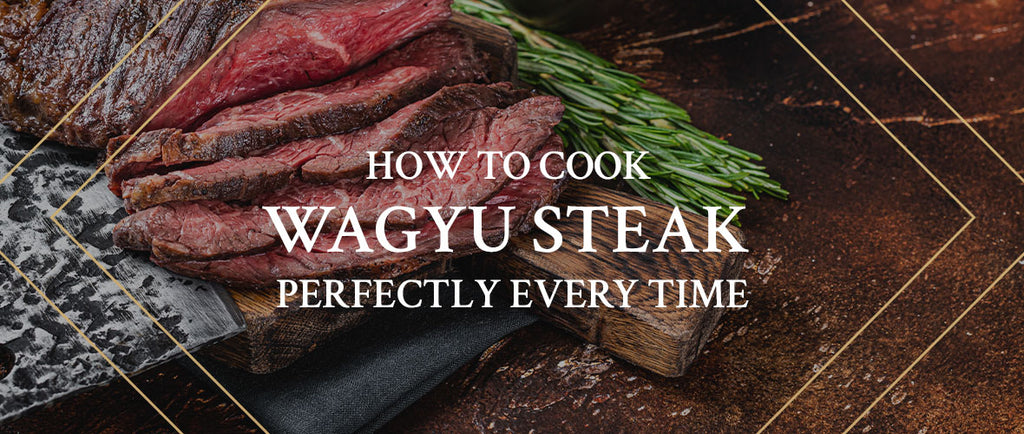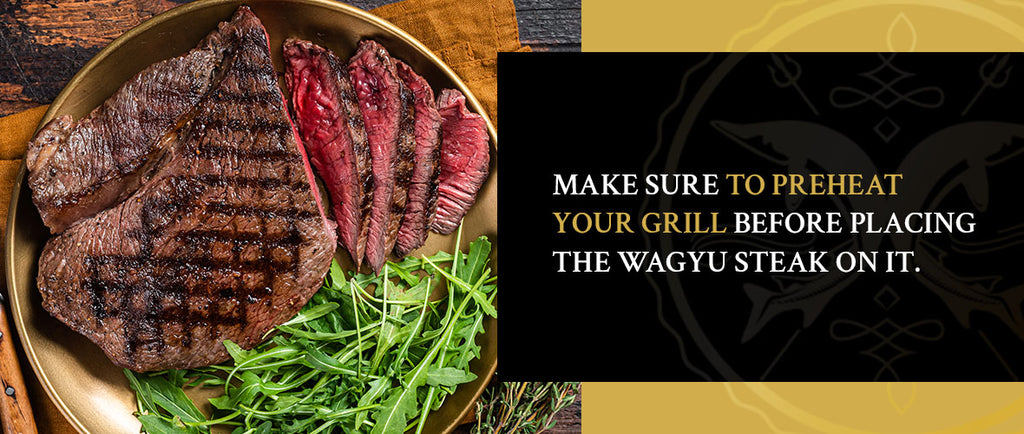
Summary: Learn how to cook Wagyu steak perfectly every time with this comprehensive guide, covering everything from selecting the best cuts to mastering various cooking techniques.
Main Points:
- Selecting the Best Wagyu Beef: Choose A4 or A5 Wagyu from reputable vendors.
- Preparation: Thaw to room temperature and season lightly.
- Cooking Techniques: Sear, grill, stir-fry, sous vide, or smoke for best results.
- Final Tips: Use minimal seasoning and let the Wagyu’s natural flavor shine.
Wagyu is a highly sought-after beef from select regions of Japan. Wagyu steaks are notable for their complex threads of fat layered within the muscle tissue of your favorite cuts.
Just one look at Wagyu, and you know it's special. However, it’s the rich, buttery flavor profile and tender texture that make this luxury protein incomparable. No wonder this beef has been compared to caviar for its luxurious texture and high price tag.
Before you carve a portion for your plate, you've got to learn how to cook Wagyu steak correctly. The highest quality Wagyu can be costly, so it’s crucial to get it right the first time.
In this guide, we’ll share how to cook A5 Wagyu like a true gourmet. Continue reading to learn how professional chefs are cooking their Wagyu filets and how to emulate them at home.
1. Select the Best Wagyu Beef
Your Wagyu journey begins with choosing the best beef available. Here's your three-step plan to secure top-quality Wagyu for your at-home dining experience.
Find a Vendor
The internet is a double-edged sword when searching for Wagyu. On the one hand, you have trusted vendors offering authentic products for reasonable prices. Alternatively, you may find less-than-reputable sellers with Wagyu that don't make the grade.
What makes Wagyu beef unique is that the Japanese Meat Grading Association laboriously grades each cut. Likewise, American Wagyu is graded by the USDA’s Agricultural Marketing Service.
The highest quality wagyu beef will receive a perfect score of A5. Only certified Wagyu with a score of A4 or A5 should carry a premium price tag. You can recognize the highest quality Wagyu steak by its intense, visually stunning marbling.
Be sure to do your research, read reviews, and use your intuition when buying luxury foods online.
Select the Best Steak Cut
You may not find common cuts of Wagyu like skirt or hanger. However, you can count on steakhouse classics like ribeyes, top sirloin, and strip steak when shopping around.
If it's your first time cooking Wagyu, we suggest buying a symmetrical, balanced cut. Start with a ribeye or strip to minimize your margin for error.
The more complicated the cut, the harder it is to get right.
Store and Protect the Beef
When your Wagyu arrives at your door, you've got to store it properly and do so immediately. These steaks are delicate and vulnerable to small temperature changes, so there's no time to waste.
Hopefully, your Wagyu will arrive vacuum-sealed and kept cold in the packaging. Place your Wagyu steaks on a plate or in a container for freezer storage to prevent direct frozen contact.
If your Wagyu is not vacuum-sealed on arrival, do your best to wrap the beef tightly in multiple layers of paper and plastic. Once wrapped, store it in the freezer ASAP. Freezer burn is caused by air exposure, so work quickly to preserve the quality of your steaks.
If frozen correctly, the quality of Wagyu beef should not diminish. Ideally, you should be ready to thaw and cook your steak a few days after receiving the shipment.
If absolutely necessary, you can freeze your Wagyu steaks for up to one year. Most experts agree that Wagyu is at its best when frozen for no more than two months, however. It’s best to plan ahead. 
2. Prepare to Cook Wagyu Beef
The process of cooking Wagyu steak starts long before the meat hits the grill. Here are the steps you need to take leading up to the main event:
Thaw to Room Temp
When thawing Wagyu beef, avoid the microwave at all costs.
Bring the meat up to room temperature in the most natural way possible. The best way is to simply leave it on the counter. Alternatively, you can thaw it by running it under cold water in the sink for 10 minutes at a time.
It's wise to keep Wagyu wrapped up when defrosting. Afterward, remove it from all plastic to rest flat on a cutting board for another few minutes.
Let some air flow around the steak to stabilize the temperature. Then, pat down any excess moisture with a dry paper towel.
Season Lightly
Once your Wagyu has reached room temperature, it's time to season your steak. Remember, Wagyu is known for its rich, unique flavor. Always use a light hand when seasoning. A good rule of thumb is “less is more.”
The best way to season your Wagyu steak is to sprinkle a small amount of salt on the top and bottom of the steak. Pat lightly along the surface without rubbing in the crystals. The meat itself will do the rest of the work.
Ready the Cooking Surface for Cooking Wagyu
As with any cut of beef in any price range, you want that cooking surface hot and ready for the first contact. If you don't hear the signature sizzle, you've jumped the gun.
Depending on the cooking technique you choose, you also might need a pad of butter or natural oil for extra fat. As you know, Wagyu has no shortage of fat within each steak. Even so, a small dash of oil can help get things moving.
If your Wagyu has some excess fat around the edges, you can trim it off and melt it down as your cooking fat. That's how the pros do it in Japan.
3. Cook Wagyu Beef Correctly
There are many ways to cook Wagyu steak, depending on the tools you possess and your ideal outcome. While some are more traditional than others, they all get the job done.
Below, we’ve outlined the most popular methods for cooking Wagyu beef at home.
Cooking Wagyu Steak on a Stove Top Skillet
A strip, ribeye, or circular filet should do just fine in a hot skillet. Just pay close attention to the color and temperature of the steak.
You're aiming for a nice, even sear across each surface of your steak. A light golden-brown crust should indicate it's time to take it off the heat.
Remember to let your steak rest before carving it up and diving in.
Cooking a Wagyu Filet on a Charcoal or Gas Grill
Grilling a Wagyu steak requires advanced technique and confidence since the heat is high and less forgiving. Make sure to preheat your grill before placing the Wagyu steak on it. This will help you keep track of the cooking time to ensure the perfect sizzle.
It's important to pat your Wagyu with a paper towel before you cook it. Otherwise, it will take longer to cook and not fulfill its potential. After gently blotting it, then you can season it to your preferences.
Here's where the instructions split. Depending on the thickness of your Wagyu, the cooking time will vary. For example, a cut that is ½-inch thick will take much less time to cook than a thicker piece.
Don't forget that Wagyu takes a shorter time to cook than Angus beef due to its fat content. The fat content cooks the Wagyu internally in a way that Angus does not.
When deciding on a cook time, ask your butcher or meat provider for their recommendation. Every cut will be different. Just make sure to rotate the steak 90 degrees to achieve those signature cross-stitch grill marks.
Cooking Wagyu on a Griddle or Plancha
This is how you've likely seen Wagyu cooked in video tutorials and footage of high-end kitchens.
The griddle offers a perfect, even surface for cooking smaller and more delicate cuts of Wagyu beef. Consider investing in one for your stove. You can also buy a standalone unit if you plan to cook more Wagyu moving forward.
This approach is similar to pan-searing, and minimal action is needed on your part. Just let the beef cook slowly on either side for about three minutes each, letting the griddle do all the work.
Don't forget the carry-over cooking effect, and remove the steak from the surface before it gets too hot.
A plancha is more common in industrial kitchens, such as those at fine dining establishments. These griddle-like cooking surfaces reach incredibly high temperatures. They make it easy to sear and caramelize a Wagyu steak and still achieve a rare, pink center.
Likewise, the vapor produced using this high-heat cooking method keeps the meat moist during cooking. Ultimately, it’s one of the best ways to preserve the buttery texture of your Wagyu steak.
How to Cook Wagyu Using the Sous Vide Method
Sous vide is an interesting and innovative way of preparing meat, and Wagyu beef is no different. With this method, meat is vacuum-sealed and immersed in water that's kept at a specific temperature.
The sous vide method guarantees a juicy and tasty meal. The vacuum sealer tenderizes the meat. Salting the meat just before vacuum-sealing can enhance flavor and texture even more.
Searing the meat after removing it from the sous vide machine is the ideal way to prepare a Wagyu steak. The end result is meat that melts in your mouth and truly highlights the best of Wagyu beef, from its flavor to its texture.
Searing Wagyu Beef
Searing is a cooking process that involves quickly browning the surface of meat at high temperatures. Many see this as the best way to cook Wagyu steak. Heating the outer layer of the steak forms a caramelized crust that bursts with flavor.
Searing involves a grill, broiler, or pan, and the key is to maintain high temperatures. Aside from caramelization, searing enhances the meat's flavor, appearance, and texture and allows it to retain its juiciness.
When meat gets exposed to high levels of heat, the Maillard reaction occurs, which leads to the browning of the meat's surface. This reaction results in a robust and complex taste.
How to Cook Wagyu Beef Using the Japanese Teppanyaki Method
Teppanyaki is a style of Japanese cooking using a flat iron plate or a griddle. A regular skillet is a good substitute. Wagyu steak prepared this way is thinly sliced and quickly cooked at high temperatures. The steak is typically marinated in a soy sauce-based sauce.
How to Stir-Fry Wagyu Beef
Stir-frying is a fast, healthy, and reliable way of preparing Wagyu beef that preserves its succulence. A major benefit of stir-frying is the ability to create many different flavors. You can experiment with different recipes to bring out the best of Wagyu beef.
The high heat involved in stir-frying promotes the Maillard reaction, intensifying the meat's beefy taste. For those who want a rich medley of flavors with their Wagyu, this is one of the best ways to prepare the meat.
Smoking Wagyu Beef
Smoking Wagyu beef elevates the meat to new levels of taste by giving it a distinct and nuanced flavor profile. The smoking process allows the marbled fat of the Wagyu beef to melt gradually. This infuses the meat with a rich and smoky essence, greatly enhancing the texture and tenderness of the steak.
Using mesquite wood is the key to proper smoking. This wood produces clean smoke that enhances the meat. Dirty smoke is filled with impurities that can lessen the benefits of smoking. For those who want to focus on how delicious Wagyu beef can be, this is an easy-to-recommend approach for preparing your steak.
How to Cook Wagyu Beef in the Oven
Using an oven to cook Wagyu isn't the preferred method. We don’t advise cooking Wagyu in an oven unless the cut is extremely thick.
If you have a thick cut of Wagyu like a bone-in filet, start by pan-searing your steak evenly on every side. Fire up your oven to 350 degrees Fahrenheit in the meantime. After three minutes of searing on larger surfaces, the steak can go into the oven for finishing.
Keep a thermometer nearby to monitor the internal temperature closely. We suggest not going above 145 degrees Fahrenheit, which is considered medium doneness.
The Best Wagyu Beef, Cooked to Perfection
Cooking authentic Wagyu beef isn’t complex. In fact, the higher levels of intramuscular fat tend to keep it tender throughout cooking. In some ways, that makes it one of the more forgiving luxury proteins available.
You'll find that less is more when it comes to seasoning, searing, grilling, or any technique you apply. Your Wagyu steak will do most of the work when it comes to producing a flavorful, pleasant dish.
As all great chefs know, quality ingredients matter most when constructing a gourmet dish. Like caviar and other luxury foods, the prestige of the product speaks for itself.
No matter how you choose to cook your Wagyu beef, you’re in for a treat. Follow these steps to create a perfect balance of natural flavor, texture, and aesthetic appearance. Then, explore the best pairings for Wagyu beef to complete your meal.
Excited to try one of these cooking methods? Shop top-quality Wagyu beef from Imperia Caviar today!
Last updated 3/27/24




